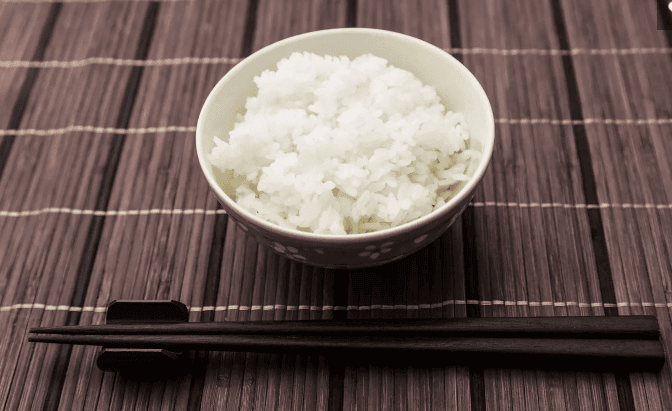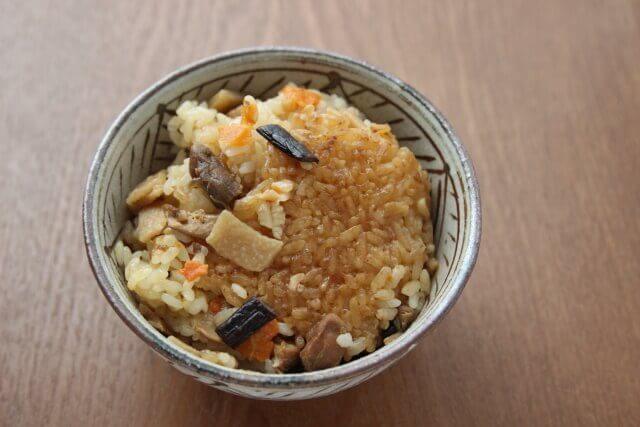INTRODUCTION
In 1939, The Imperial Household Agency selected a representative of local dishes nationwide. It was the five major rice dishes called “The Five Great Rice Meals of Japan”. These includes Fukagawa meshi (Tokyo, Fukagawa), Chushichi meshi (Ogawa-cho, Saitama), Sayori meshi (mountain region of Gifu prefecture), Kayaku meshi (Osaka, Namba region), Uzume meshi (Tsuwano region, Shimane prefecture)
WHAT IS THE IMPORTANCE OF RICE IN JAPAN?

Rice is so important in Japanese society that it becomes the essence of the culture. Moreover, it manifests in numerous aspects of Japanese cultural life, ranging from folklore, festivals, and family rituals to arts, crafts, and cooking. The importance of rice in Japan can not be emphasize enough. Consequently, it is the source of traditional spirit, sake, and left as offerings to gods and ancestors. Rice cultivation happened for over 2,000 years in Japan. The cooked rice called “Gohan” or “meshi” is a staple food that has become part of its diet. The word “Kome” literally means rice in Japanese and refers to uncooked rice. Therefore, Japanese eat this regularly and even daily.

Additionally, the term “Don” is a suffix in Japanese dish names. Moreover, Don is the abbreviation for “Donburi (丼),” which refers to a rice bowl dish.
HOW MUCH RICE IS CONSUMED IN JAPAN?

Japanese consume about 9 million tons of rice a year. About three quarters of Japanese eat rice meals for breakfast, lunch and dinner. However, the Japanese are eating less rice meals than they used to. In 1962, Japan’s economy was booming. And the annual consumption of rice per capita was 118.3 kilograms. It has dropped since, however, falling to 54.4 kilograms per person in 2016. Calculating one bowl of white rice as weighing 60 grams, Japanese people ate 5.4 bowls each day on average in 1962. While producers are making every effort to improve flavour and texture at agricultural experiment stations across the country, consumers’ move away from the former favourite staple shows no signs of slowing.
These days many Japanese eat bread and noodles instead of rice meals.
While Japanese people are not eating as much rice, their consumption of meat, milk and dairy products, and fats and oils has increased. In addition to the increased preference for a more Western-style diet, the tendency to eat less as people get older. A fall in the overall population are contributory factors to reduced rice meals consumption. In recent years, there has also been a huge trend of people aiming to stay slim by cutting down on carbohydrates.
According to 2014 Ministry of Agriculture, Forestry, and Fisheries survey, nearly half of the respondents said they chose not to eat rice meals in the evenings because they “want to try a wide variety of staple foods.” On busy mornings, people also prefer to choose staple foods other than rice that can be eaten quickly. Also, do not need much time for preparation and cleaning up. It seems, however, that Japanese people today fail to see its true value.
WHAT ARE THE FIVE GREAT RICE MEALS OF JAPAN?
The Five Great Rice Meals of Japan are the following.
Chushichi meshi (忠七めし)
Fukagawa meshi (深川めし)
Sayori meshi (さより飯)
Kayaku meshi (かやく飯)
Uzume-meshi (うずめ飯)
Conlusion
The Five Great Rice Dishes of Japan represent a rich culinary tradition that showcases the importance of rice in Japanese culture. These dishes – Chushichi meshi, Fukagawa meshi, Sayori meshi, Kayaku meshi, and Uzume meshi – originate from different regions of Japan and highlight unique local ingredients and cooking methods. While rice consumption in Japan has declined in recent years due to changing dietary and lifestyle factors, these five iconic dishes serve as a reminder of the central role rice has played in Japanese cuisine and society for over two millennia. They not only reflect the diverse regional flavors of Japan but also embody the country’s deep-rooted agricultural heritage and culinary ingenuity. As Japan continues to evolve, these dishes stand as culinary landmarks, preserving traditional flavors and techniques for future generations to appreciate and enjoy.
Videos
FAQ
- What are the Five Great Rice Meals?
Fukagawa-meshi, Chūshichi-meshi, Sayori-meshi, Kayaku-meshi, and Uzume-meshi, chosen in 1939.
- Why are they special?
They highlight local ingredients, cooking styles, and Japan’s rice culture.
- Where do they come from?
Tokyo, Saitama, Gifu, Osaka, and Shimane.
- Can I still eat them today?
Yes, at regional restaurants and food festivals.
- What do they show about Japanese cuisine?
Rice is more than food—it’s central to tradition and everyday life.





















Comments